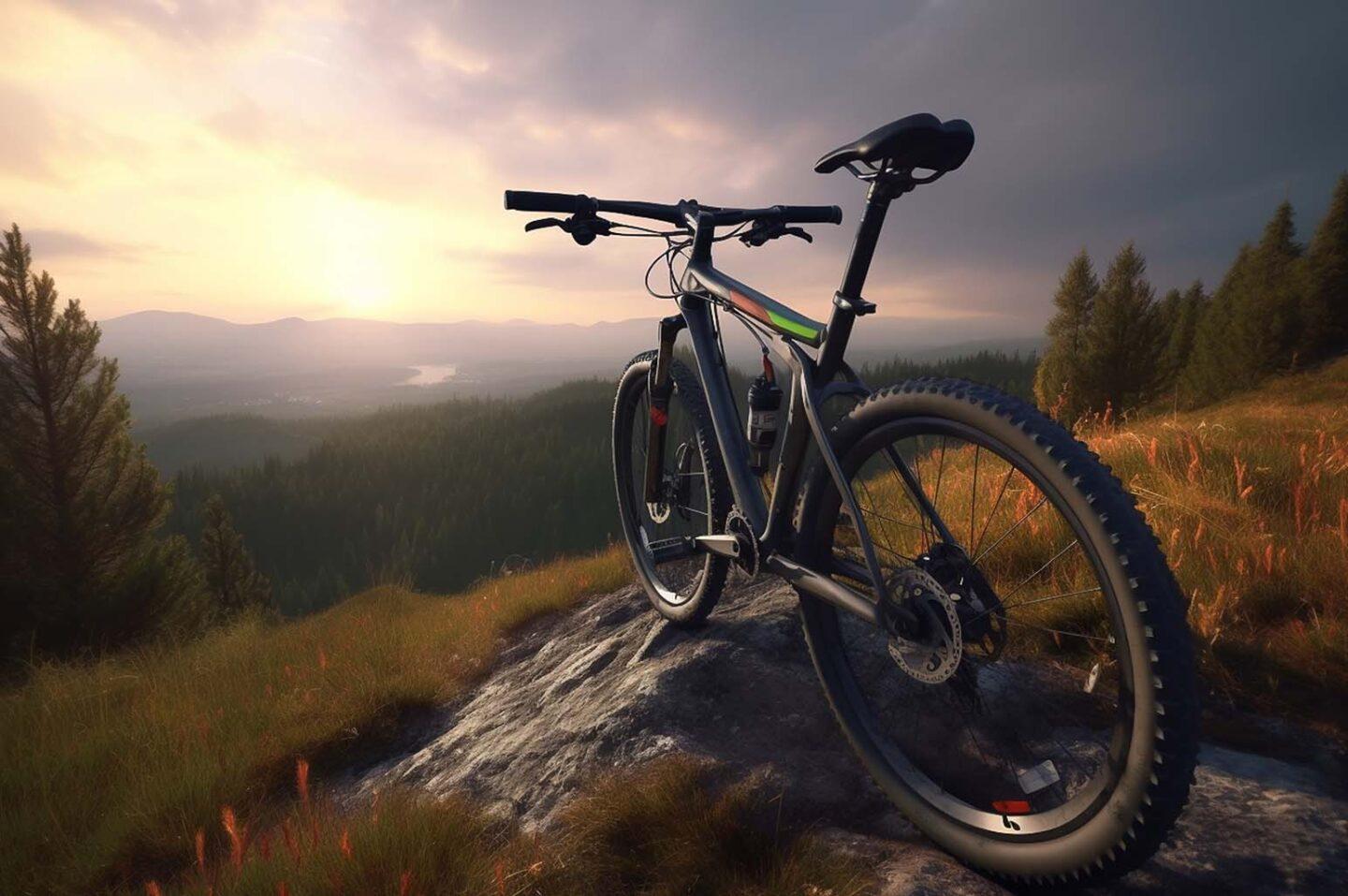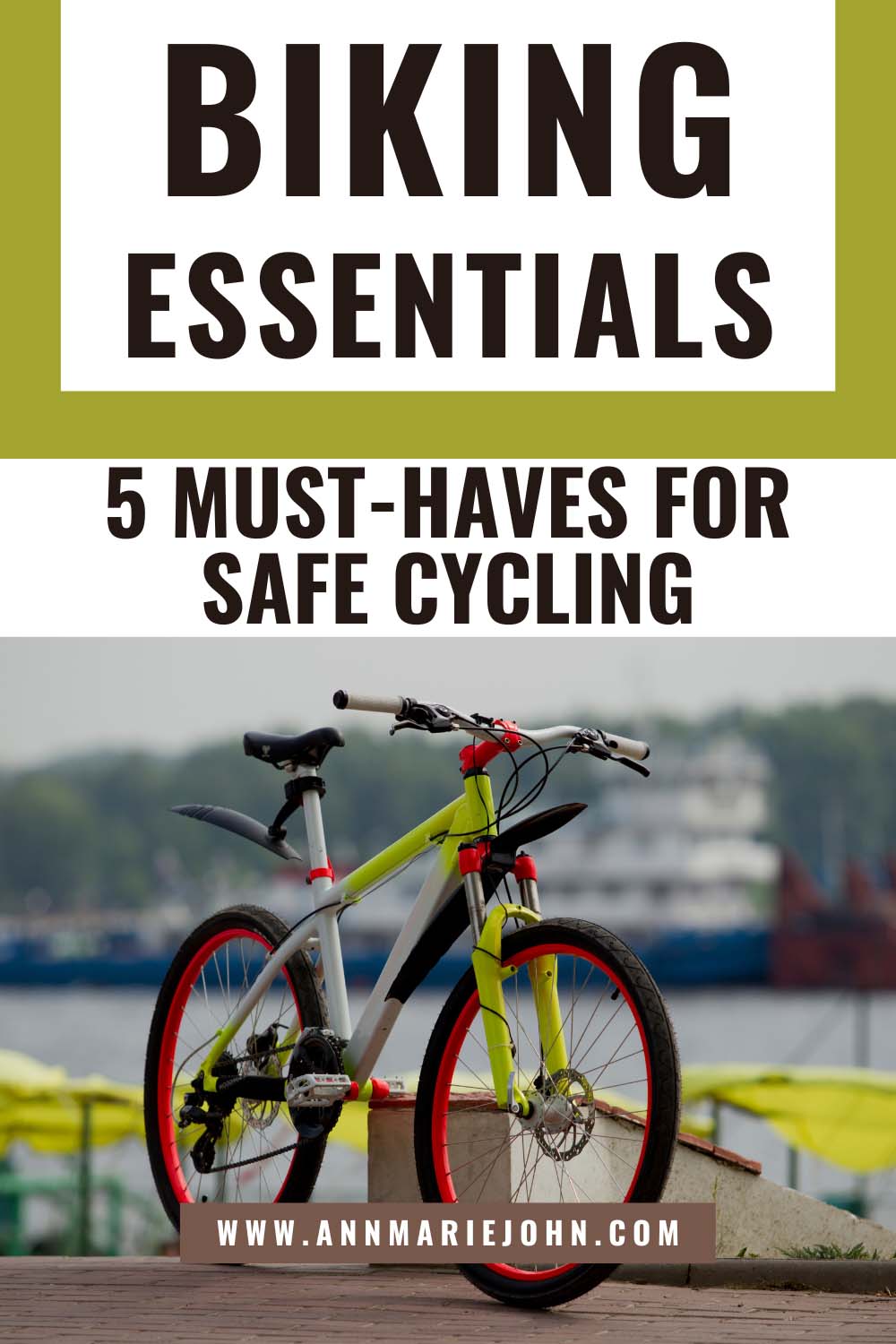Explore biking safety with our guide. Discover the five essential must-haves for a secure cycling experience. Pedal confidently with these tips!

Cycling is a low-impact exercise that helps you maintain a healthy lifestyle and overall well-being. It can be an everyday activity that keeps us active, a mode of transportation, or an intense, competitive sport. Regardless of how you apply, appreciate, and enjoy biking, there are biking essentials to ensure safety on the road.
Read on to learn the must-have biking essentials to guarantee road safety.

5 Must-Have Biking Essentials
Did you know that there are approximately 1,000 bicycle fatalities and about 130,000 victims of bike accident injuries in the United States every year? Although there are biking laws to follow to protect you, it is best to be extra careful by knowing and getting biking essentials for your safety.
Helmet
One of the most crucial biking essentials is a helmet. Although you are not required to wear a helmet if you are eighteen years old or older, this will help you protect your head from bike accident injuries such as brain and head damage. When choosing the perfect helmet, ensure it serves its purpose based on your biking style.
- Get a recreational, urban bike helmet if you are a casual biker or commuter. These are designed for individuals who bike occasionally. It is economical, offers good ventilation, and comes in different styles.
- If you enjoy biking as a sport, get a road bike. Road bike helmets are comfortable and lightweight, making them perfect for high-speed riding.
- If you tend to go mountain biking, get mountain bike helmets. These helmets have excellent ventilation for slow-paced riders. It also has extra head coverage and a visor to suit the conditions of the environment.
Padded shorts
When you are comfortable enough, you can focus on the road. It is preferable to wear padded shorts for comfort when you are cycling long distances. Here are the following tips to have the best-padded shorts for you:
- Choose padded shorts with a fabric of 80% nylon and 20% spandex. This will ensure that your shorts are comfortable and stretchable enough for biking.
- Your shorts should have at least four to eight panels. Panels are fabrics cut into pieces to make custom-fit shorts. These panels are then sewn together to create the perfect bike shorts.
- Check the placement of your chamois pads. Chamois is the cushioning of the shorts that helps support areas in your body prone to soreness. Your chamois pad can be positioned differently depending on your biking style.
- Examine the leg gripper’s material. Leg grippers are made to keep the legs in place when biking. Some people are allergic to silicon, which is the main component of a leg gripper.
- Measure the waist elastics. Waist elastics usually measure one inch in width to keep the shorts in place.
Cycling Jersey
Weather conditions can affect how you ride a bike, especially for those who prefer cycling as an intense, competitive sport. A cycling jersey is made from fabric designed to help with ventilation and keep you dry as you sweat. There are also corresponding cycling jerseys for different kinds of weather conditions.
- Use breathable cycling jerseys with short sleeves and arm warmers when biking in the spring. Also, use a base layer underneath the jersey.
- When biking during the summer, use cycling jerseys with short sleeves, preferably those with thin and light ventilation fabrics.
- Depending on the temperature when biking during the fall season, you may use thin to thick cycling jerseys. Use leg and arm warmers if the weather conditions are too cold.
- When biking in winter, use thick cycling jerseys and add winter jackets for comfort.
Water bottle and bottle cage
It is essential to keep yourself hydrated while you cycle. This is why you should always have a water bottle with you and have a bottle cage attached to your bike for better reach and safety.
When you are dehydrated when you cycle, you may experience less muscle work, heat exhaustion, hallucinations, and circulatory problems. You may also experience a heat stroke that may lead to death.
Essential tools such as pumps, chain oil, and spare tubes
It would help if you were prepared for bike part malfunctions by having the essential tools. Sometimes, you might pass on broken glass or any material that may cause your tire to flatten out. Having the essential tools helps you resolve the issue instantly.
Here is a list of the essential tools you might want to carry when biking:
- Spare tube
- Patch kit
- Hand pump
- Multi-tool
- Tire levers
What Are the Health Benefits of Cycling?
Cycling entails numerous health benefits that help you sustain an active and healthy lifestyle. To name a few, here are the following advantages of cycling:
- Improves mental health.
Cycling enhances cognitive development and overall well-being. It also alleviates stress, depression, or anxiety.
- Helps you lose weight.
Cycling regularly can help lower your body fat percentage. In addition, it aids in boosting your metabolism and building muscle, which helps burn more calories in your body.
- Strengthens your immune system
Health experts prove that mild exercises such as biking can improve your immune system by speeding up the production of necessary proteins and white blood cells.
- Reduces the risk of critical diseases
One of the main benefits of cycling is that it reduces the risk of acute diseases such as cardiovascular problems and cancer.
Being careful and prepared will help you ensure safety on the road. However, there are cases where you may encounter bike accidents that are out of your control. We want you to be prepared if this happens to you.
Is It Safe to Ride A Bicycle In California?
Several bicycle accidents have been recorded in California. Each year, about 100 deaths and 10,000 victims suffer from bicycle accident injuries caused by traffic collisions in California alone. Because of these figures, California drafted the California Vehicle Code, which emphasizes where and how bikes must be operated in California.
Here are the following points to follow under the given law:
- You can bike wherever you want if you are moving as fast as traffic.
- If you are moving slower than the traffic, you must go to the right side of the road. However, you may ‘take the lane’ if you are preparing for a left turn, avoiding road hazards, or if the road is too narrow to share with a vehicle.
- Always use bicycle lanes, if there are any.
- If you are biking on a separate bikeway (a bikeway separated from traffic using a post, parking, or others), you may ride outside the bikeway anytime.
- Gas-powered and electric bicycles (with top-assisted speeds of 20 mph) are not allowed on trails, bike paths, or bike lanes unless authorized by local enforcement.
- You are not allowed to park in a bicycle lane.
- You may bike on a sidewalk, depending on the city or county.
- Bikes are prohibited on freeways and toll bridges.
What to Do When Involved In Bicycle Accidents?
Like in any other vehicle, you must always ensure that you are traveling in the safest way possible. You may encounter an accident due to someone else’s negligence, despite following all necessary protocols and having the biking essentials for safety. If you are involved in a bicycle accident, here are the steps to take after the incident occurs:
- Check if you have bicycle accident injuries.
- Dial 911 for health assistance.
- Examine the scene and document evidence such as contact details, the testimony of witnesses, and the personal information of the driver at fault.
- Report the incident to the police.
- Contact a California bicycle accident lawyer if you are unsure how to handle the case.
There are instances when you face complexities in a bicycle accident, such as when:
- You have limited pieces of evidence.
Evidence such as the driver’s personal information, witness testimony, or CCTV footage is vital to building your case. Without these, it would be difficult to prove your case.
- You were not wearing a helmet at the time of the accident.
In such instances, you may still be able to sue the at-fault party. However, the defendant may argue that the lack of a helmet caused the accident or may reduce the value of your compensation.
- The driver fled the scene.
There are several instances when the driver at fault leaves the scene. This may be because they were not insured, have an existing violation, or were driving under the influence or intoxicated.
For instance, a driver hits you while you are cycling. Because they were uninsured, they decided to leave the scene without helping you or notifying the authorities. How, then, will you receive compensation for the damages if you can’t identify the at-fault driver? In such an instance, you will need a lawyer for the car accident to determine the legal options suitable to your situation.
Remember that these complexities may hinder you from receiving compensation. This is why it is best to contact a personal injury lawyer who understands the legalities of accident claims.
Conclusion
Enhancing safety and visibility through bicycling essentials may significantly decrease bicycle accidents. However, other factors, such as human errors or unsafe road structures, can still contribute to bicycle crashes.
You may feel overwhelmed, frustrated, and confused if you are involved in a bicycle accident. Injured bicyclists usually avoid filing a case, thinking they may shell out a huge sum of money when doing so.
The reality is that a bicycle accident lawyer can help you deal with your case and maximize your compensation. To increase your settlement, they will prove the driver’s liability and calculate the total damages, including monetary and non-monetary losses.
